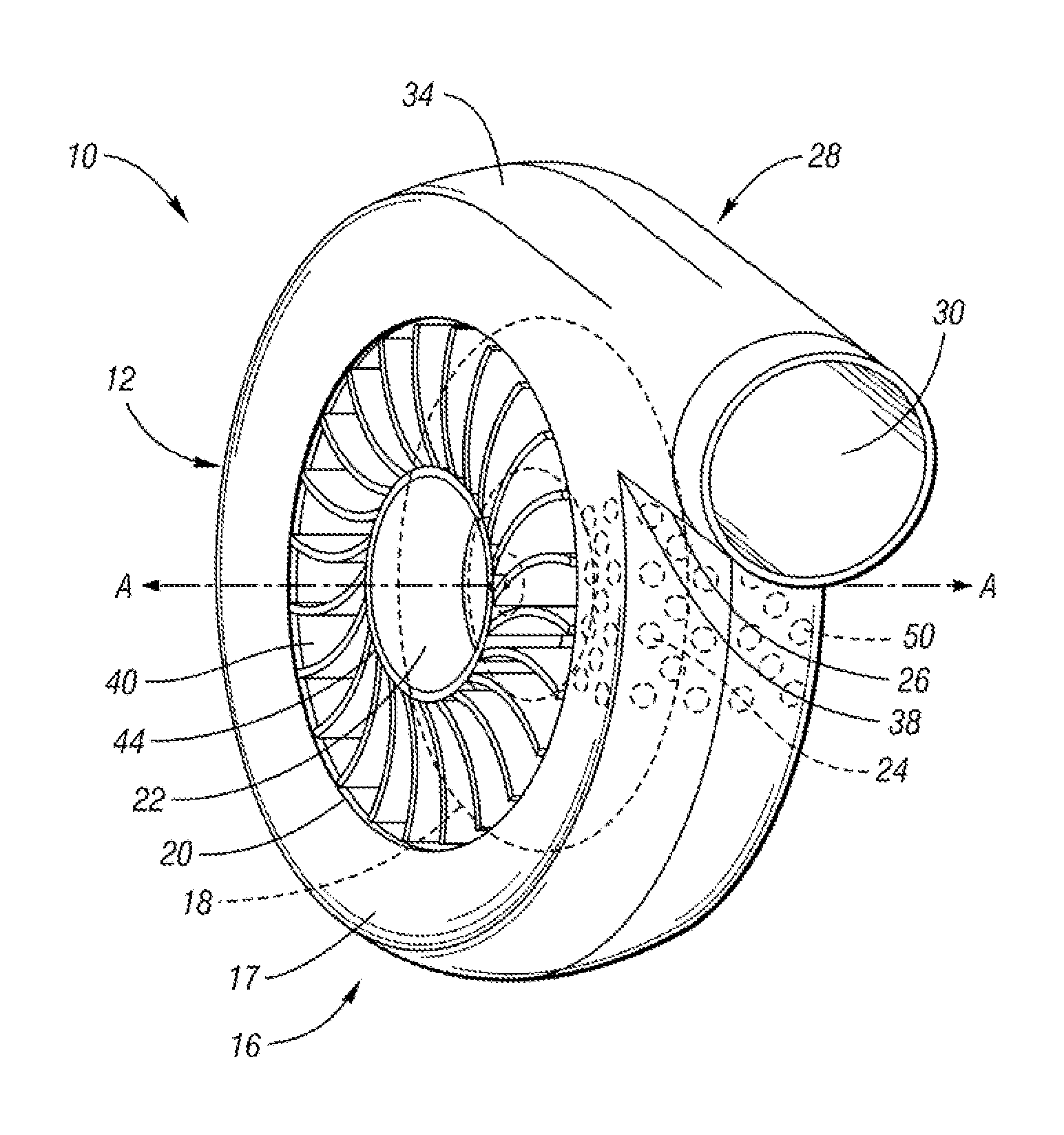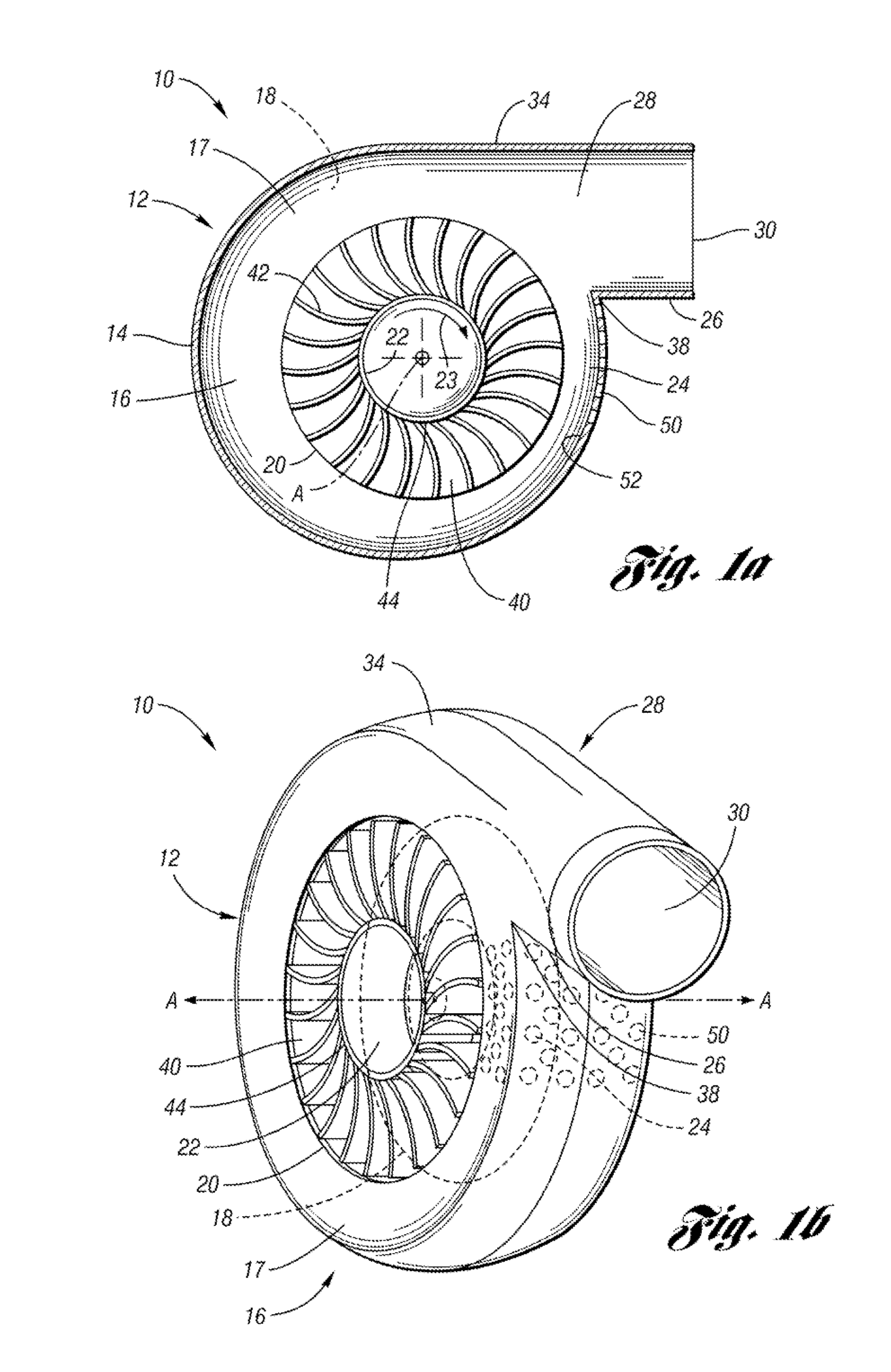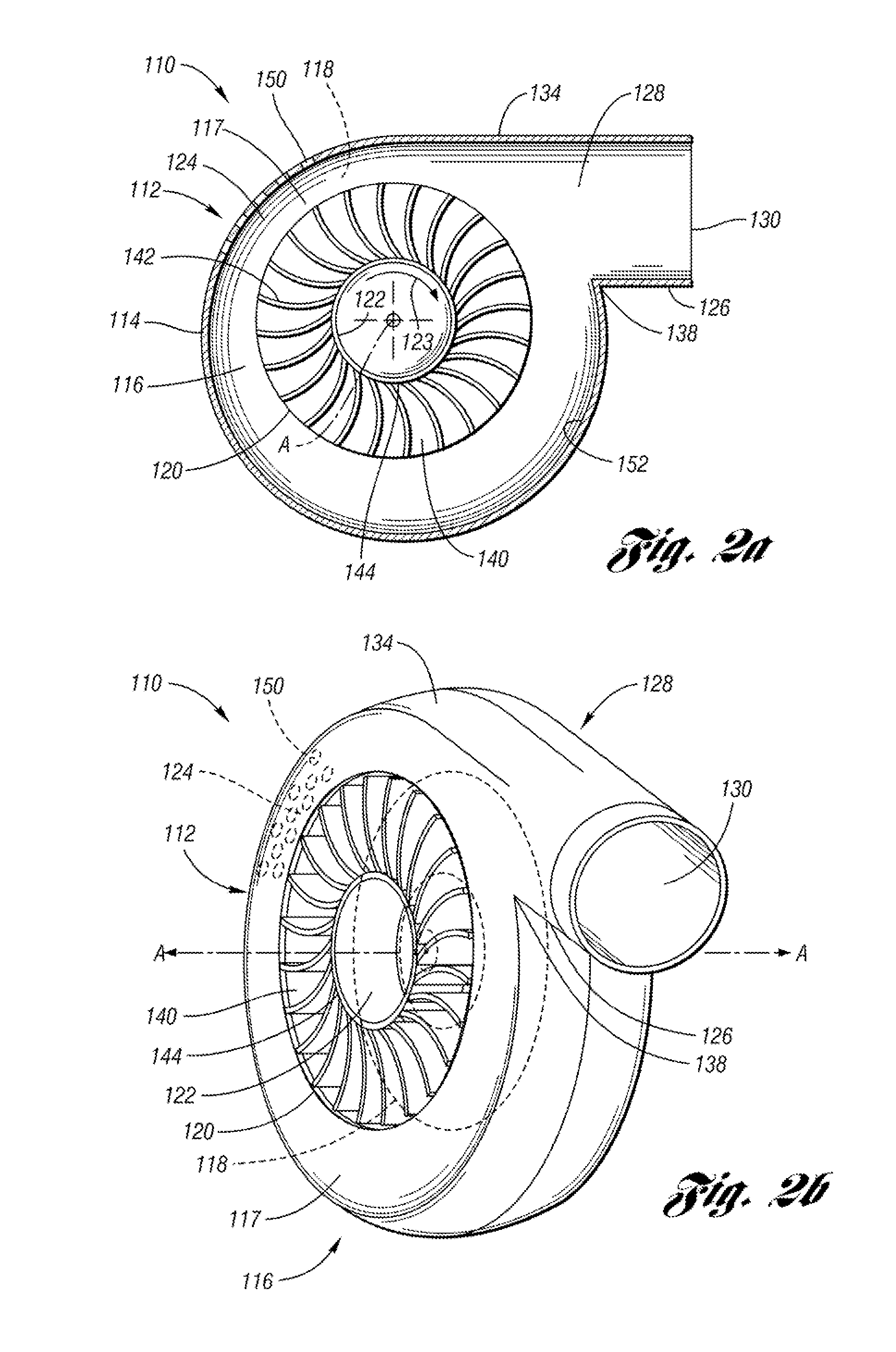Reduction of flow-induced noise in a centrifugal blower
a centrifugal blower and noise reduction technology, which is applied in the direction of machines/engines, stators, liquid fuel engines, etc., can solve the problems of noise generated by the interaction between the airflow and the smooth inner surface of the blower housing, the noise of extraneous sounds, and the thickening of the inner surface of the blower, so as to achieve efficient airflow transition and effective reduction of flow-induced noise
- Summary
- Abstract
- Description
- Claims
- Application Information
AI Technical Summary
Benefits of technology
Problems solved by technology
Method used
Image
Examples
Embodiment Construction
[0020]The present invention generally provides a centrifugal blower having reduced noise generation. The blower includes a distinct surface roughness along an inner surface of a scroll-housing at a cutoff defined by a reduced airflow cross-sectional area within the scroll-housing. The unique surface roughness at the cutoff effectively reduces flow-induced noise by providing an efficient transition of airflow through the blower.
[0021]FIGS. 1a-b illustrate a centrifugal blower 10 constructed in accordance with one embodiment of the present invention. As shown, the blower 10 generally includes a scroll-shaped blower housing 12 formed of first and second sidewalls 17, 18 spaced apart by a scroll wall 14. In this embodiment, the scroll wall 14 arcuately extends about a rotational axis A to define a circular scroll section 16. The scroll section 16 includes a circular opening20 formed therein through sidewalls 17, 18. The opening 20 defines an inlet 22 configured to draw in air. The blowe...
PUM
 Login to View More
Login to View More Abstract
Description
Claims
Application Information
 Login to View More
Login to View More - R&D
- Intellectual Property
- Life Sciences
- Materials
- Tech Scout
- Unparalleled Data Quality
- Higher Quality Content
- 60% Fewer Hallucinations
Browse by: Latest US Patents, China's latest patents, Technical Efficacy Thesaurus, Application Domain, Technology Topic, Popular Technical Reports.
© 2025 PatSnap. All rights reserved.Legal|Privacy policy|Modern Slavery Act Transparency Statement|Sitemap|About US| Contact US: help@patsnap.com



